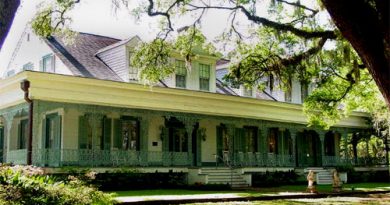Stonehenge ‘a long-term cemetery’
Stonehenge served as a burial ground for much longer than had previously been believed, new research suggests. The site was used as a cemetery for 500 years, from the point of its inception. Archaeologists have said the cremation burials found at the site might represent a single elite family and its descendents – perhaps a ruling dynasty.
One clue to this idea is that there are few burials in the earliest phase, but that the number grows larger in later centuries, as offspring multiplied. Under the traditional view, cremation burials were dug at the site between 2,700 BC and 2,600 BC, about a century before the large stones – known as sarsens – were put in place.
Professor Mike Parker Pearson, from the department of archaeology at the University of Sheffield, and his colleagues have now carried out radiocarbon dating of burials excavated in the 1950s that were kept at the nearby Salisbury Museum. Their results suggest burials took place at the site from the initiation of Stonehenge, just after 3,000 BC, until the time the large stones appear at about 2,500 BC.
The earliest cremation burial dated – a small pile of burned bones and teeth – came from one of the pits around the edge of Stonehenge known as the Aubrey Holes and dates to between 3,030 BC and 2,880 BC – roughly the time when the Stonehenge monument was cut into Salisbury Plain.
The second burial, from the ditch surrounding Stonehenge, is that of an adult and dates to between 2,930 BC and 2,870 BC. The most recent cremation comes from the ditch’s northern side and was of a 25-year-old woman; it dates to between 2,570 BC and 2,340 BC, around the time the first arrangements of sarsen stones appeared at Stonehenge.
The latest findings are the result of the Stonehenge Riverside Project, a collaboration between five UK universities. Details of the research are to be featured in National Geographic magazine.
Royal circle?
Professor Parker-Pearson, who leads the project, said: “I don’t think it was the common people getting buried at Stonehenge – it was clearly a special place at that time.” He added: “Archaeologists have long speculated about whether Stonehenge was put up by prehistoric chiefs – perhaps even ancient royalty – and the new results suggest that not only is this likely to have been the case, but it also was the resting place of their mortal remains.”
Two other Stonehenge experts, Professor Tim Darvill, from the University of Bournemouth, and Professor Geoff Wainwright, from the Society of Antiquaries, have a different theory about the monument. They are convinced that the dominating feature on Salisbury Plain in Wiltshire was akin to a “Neolithic Lourdes” – a place where people went on a pilgrimage to get cured.
They recently carried out a two-week excavation at the site to search for clues to why the 4,500-year-old landmark was erected.
New radiocarbon dates of human remains excavated from the ancient stone monument in southwest England suggest it was used as a cemetery from its inception just after 3000 BC until well after the larger circle of stones went up around 2500 BC.
Previously, archaeologists had believed people were buried at Stonehenge between 2700 and 2600 BC. “The hypothesis we are working on is that Stonehenge represents a place of the dead,” said Mike Parker Pearson, an archaeologist at the University of Sheffield, who is leading an excavation of the site. “That seems to be very clear.”
“A further twist is that the people buried at Stonehenge may have been the elite of their society, an ancient royal British dynasty, perhaps.” Built between 3000 and 1600 BC as a temple, burial ground, astronomical calendar or all three, the stone circle is sometimes called “Britain’s pyramids”. Tourists are drawn to Stonehenge throughout the year and on the summer solstice — the longest day of the year in the northern hemisphere — up to 30,000 revellers and druids converge on the stones for a night of celebration.
“Domain of the dead”
Who built Stonehenge and why is debated among scientists, although growing evidence points to the monument’s use as a burial place, Parker Pearson told reporters. Last year the same researchers found evidence of a large settlement of houses nearby. They said the latest findings reinforced their belief that the settlement and Stonehenge form part of a larger ancient ceremonial complex along the nearby River Avon.
“What we suspect is that the river is the conduit between the two realms of the living and the dead,” Parker Pearson said. “It was the prehistoric version of the river Styx.”
The team estimates that between 150 to 240 men, women and children were buried at Stonehenge over a 600-year period, making it likely that the relatively low figure over such a long points to a single elite family. A clue is the few burials in Stonehenge’s earliest phase, a number that grows larger in following centuries as offspring would have multiplied, said Andrew Chamberlain, a specialist in ancient demography at the University of Sheffield.
Placement of the graves and artefacts such as a small stone mace are evidence the site was reserved as a “domain of the dead” for the elite, Parker Pearson added.
“I don’t think it was the common people getting buried at Stonehenge — it was clearly a special place at the time,” he said. “One has to assume anyone buried there had some good credentials.”



